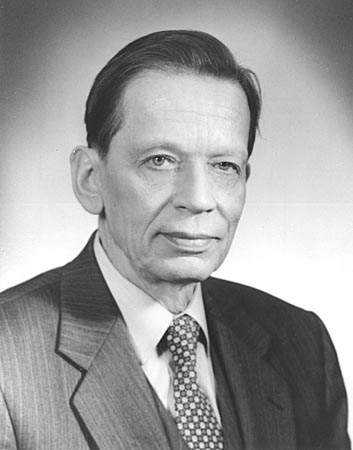
Professor Ryti earned his master of science degree in engineering in 1944 and completed his licentiate of technology degree in 1960. During his professional career, he was a production engineer for G.A. Serlachius Oy, Kangas Paper Mill, 1945-1950, and technical manager from 1950-1960; technical manager for Oy Wilh. Schauman Ab, Pietarsaari Paper Mill, 1960-1963; and professor of paper technology at Helsinki University of Technology, 1963-1977. In 1977, he joined Jaakko Poyry International Oy and served as president until 1979, when he was elected chairman and chief executive officer of Jaakko Poyry Consulting Oy. He served as a board member for the Jaakko Poyry companies until his retirement in 1983.
As professor of paper technology at Helsinki University of Technology, Dr. Ryti was in a key position to produce qualified paper engineers, therefore contributing significantly to the technological status and development of the paper industry both in Finland and worldwide. He instituted systematic postgraduate education programs in paper technology at the university, which resulted in a number of licentiates and doctors of technology. Professor Ryti wrote a textbook on paper technology that is still widely used in Finland. He was also the editor of the Handbook of Paper Manufacture, published in 1969 by the Finnish Paper Engineers Association.
Professor Ryti trained an entire generation of Finnish paper engineers, who now hold leading positions throughout the paper industry and who apply modern methods and thinking. The current high standards set by these industries is largely based on his pioneering work as a scientist and teacher.
The research and development pursued and supervised by Dr. Ryti, both at the university and in the Jaakko Poyry companies, has had a profound and long-lasting impact on the technology and economics of the industry. He was instrumental in developing the philosophy behind the pulp characterization methods that are still being used at mills all over the world to find the optimum furnish for a given papermaking process. In addition, the first mill-scale integrated groundwood mill control system, the AGMO, was developed under his guidance. Most of the current systems are based on this principle.
Professor Rytiís work had a considerable impact on the development of papermaking machinery. His work led to the methods for analyzing the stability of paper machines based on variance component analysis, currently widely used by paper machine suppliers and papermakers. The study on formation measurement, which he supervised at the university, led to the development of a commercial formation tester now sold under the name Ambertec. Pioneering work on the application of radioactive tracing techniques for analyzing the performance of refiners and pulp chests was also done under his guidance.
While employed by the Jaakko Poyry companies, Dr. Ryti contributed to the technical progress of the industry, notably by developing and application of radioactive tracing techniques for analyzing the performance of refiners and pulp chests. He directed the study on the international competitiveness of the Finnish forest industry conducted for the Finnish Government and the Central Association of Finnish Forest Industries. As president and board member of Jaakko Poyry International, Niilo Ryti helped many companies, governments, and international institutions in the strategic planning of their forest industries.
Professor Ryti is a member of the Finnish Association of Graduate Engineers; the Finnish Paper Engineers Association; TAPPI; and the Finnish Academy of Technology.
In 1981, he received an honorary doctorís degree from the Helsinki University of Technology and the Lampen Medal bestowed by the Finnish Paper Engineers Association; in 1969, he received the Stenback Plaque.
He was the son of President Risto Ryti and was seventh cousin of Grandma Minnie Lemponen.